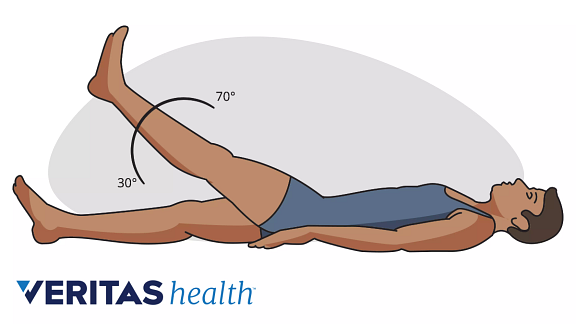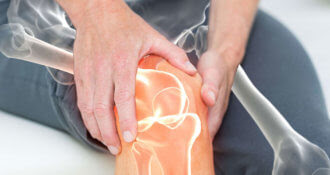Identifying Sciatica
Sometimes, intense leg pain stems from back-related issues. Pain that comes and goes, especially when pressure is applied to the knees, shins or feet, can be sciatica. The sciatic nerve is the single biggest nerve in our bodies: Whether it’s injured during an accident or has simply worn down over time, this nerve can really impact day to day life.
But how exactly does sciatica work? And, more importantly, how can we tell if leg and lower back pain is sciatica, itself? Let’s take a closer look.
Why Does Sciatica Happen?
More often than not, sciatica happens due to a herniated disk. Your vertebrae, or your spine’s bones, are each cushioned by soft, flexible and round disks.
About Herniated Disks
These disks are pretty durable, but they’re not immune to injury. If they wear down with age, or if they’ve taken the brunt of an accident’s force, they can ‘herniate,’ or be forced through a vertebrae’s small openings. When this happens, the disk might apply pressure on the sciatic nerve—causing sharp, intermittent pain during movement.
In the case of age-related sciatica, the source is often spinal stenosis—or the narrowing of the spinal cord.
About Spinal Stenosis
Spinal stenosis mostly occurs after the age of 50—but it can certainly occur before then. As we age, and as our spinal column narrows, the spinal cord can become compressed—as it rests within this canal. There are two types of spinal stenosis, defined by the location of this narrowing:
Lumbar stenosis: This type of stenosis occurs when the lower back’s spinal section narrows.
Cervical stenosis: This type occurs when the neck’s spinal section narrows.
In most cases, stenosis results from arthritis. In any event, spinal stenosis can create a lot of back problems—all the way down to its sciatic nerve.
Sciatica Symptoms
When we think about back pain, we tend to think about just how large the back is. How can we tell if sciatica is the problem?
Fortunately, there are a couple of ways to identify sciatica. While some symptoms also occur with other types of lower back pain, others tend to be specific to sciatica. It’s important to speak with your physician if any symptoms occur in general, however, as sudden back pain, leg pain or neck pain can indicate deeper injuries.
Let’s take a look at the biggest red flags of sciatica:
Pain on One Side
Sciatica is unique due to its ‘one side of the body’ impact. Normally, sciatic pain extends from the lower back—running all the way down the thigh. Depending on where the sciatic nerve is experiencing pressure, the pain extends to different lengths. In more severe cases, the pain can even extend to the feet!
Pain with Applied Pressure
While sudden back injuries can create similarly sudden spurts of pain, sciatica pain often starts when pressure is applied. This tends to happen when pressure is applied to the feet—as this pressure ‘transfers’ up the leg, into the lower back and directly to the sciatic nerve.
This type of pressure is extremely common during the following activities—and can help us point out a sciatic nerve problem:
- Stepping on the affected side’s foot, especially on the heel
- Bending over with a curved back
- Rolling over in bed
- Standing up from a seated position
Other Symptoms
Sciatic nerve pain can be pretty intense, so it’s important to contact a medical provider as soon as it occurs. Because sciatica is caused by a pinched nerve, it can become even more damaged over time. Other sciatica symptoms include:
- Leg numbness
- Lower extremity weakness
- Loss of bladder control
Sciatic Nerve Pain Relief
Sciatica can be treated in several ways. In most cases, people with sciatica can find comfort in as little as a few weeks. One of the best ways to recover from sciatica is physical therapy. A physical therapist can help you create a strength-building and flexibility exercise routine. Sciatica-specific routines focus on posture to relieve sciatic nerve pressure—allowing the nerve to heal.
Contacting a Provider
Applying hot and cold temperatures, intermittently, can also help. Try applying each, back and forth, for a few minutes—several times per day. If you’re working alongside a provider, this method goes great with therapies like yoga, massage and biofeedback.
If you’re experiencing sciatic pain, you have a number of great options available to recover—and each is pretty effective. PT Link wants to help you recover completely, and to make a difference that lasts. Live pain free, and explore some of today’s greatest sciatica treatment options.
Source Url :- https://www.atoallinks.com/2021/identifying-sciatica/



Comments
Post a Comment